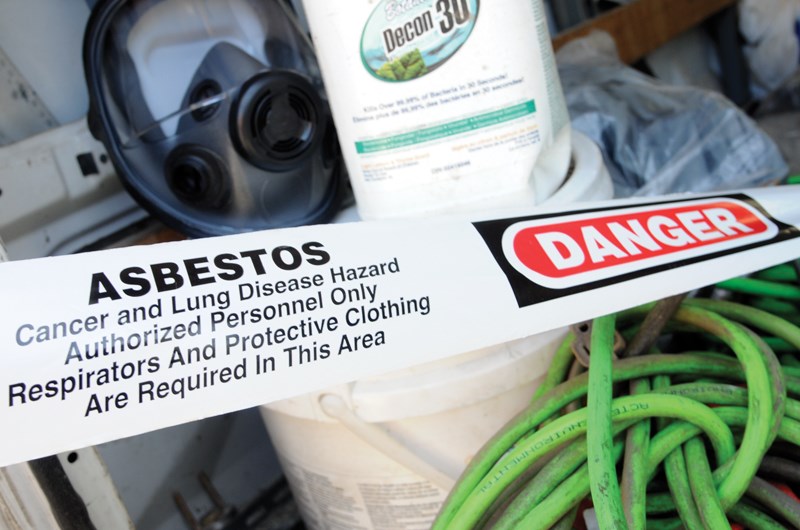Contractors who cut corners with asbestos put lives in danger.
That’s the message from WorkSafeBC after the agency issued more asbestos-related stop work orders and fines in the first eight months of 2017 than in all of 2016.
Preventing exposure today “will prevent the disease in the future,” said WorkSafeBC vice-president Al Johnson.
More than 600 British Columbian workers died from asbestos-related disease in the past decade. In 2016, more than one-third of the 164 construction deaths in B.C. stemmed from asbestos-related illness. Asbestos is set to be banned in Canada in 2018 but workers still face exposure as escalating property values have triggered a rash in home demolitions, Johnson noted.
The risk is acute in homes built before 1990, as asbestos was used in more than 3,000 building materials.
WorkSafeBC levelled a $3,959 fine on Living Balance International Trading Ltd. in July during a North Vancouver demolition job.
The penalty came after a report revealed asbestos-containing materials where labourers had already begun work. The firm also failed to inspect the site to identify hazardous materials before beginning demolition, according to WorkSafeBC.
The agency also slapped a $3,528 fine on CM Environmental Inc. after their asbestos abatement work failed to remove all asbestos from a North Vancouver home prior to demolition. The fines are intended to encourage businesses to do things properly, Johnson explained.
“You want to motivate the employer into compliance and a penalty can do that,” he said. “But it’s not about making money.”
While penalties can jump into the $100,000 range, levelling large fines on small contractors can push companies into an underground economy, Johnson warned. Given the widespread use of asbestos in older homes and the recent proliferation of demolition permits, enforcement can be a challenge.
“We can’t be everywhere just because of the volume,” Johnson said.
Instead of surveying every demolition site, WorkSafe is trying to engage homeowners and contractors to handle hazardous materials properly.
“We’re in the business of catching employers doing it right, we’re not in the business of catching them doing it wrong,” he said.
However, in particularly egregious cases WorkSafeBC can issue a stop-operations order, shutting down every job site in which a certain contractor is involved.
Johnson was also adamant that workers reject dangerous conditions.
“Not only is it a right, it’s a responsibility to refuse unsafe work,” he said.
If a worker sees a serious injury, chemical release, or general unsafe conditions, they can call WorkSafeBC at 604-276-3100. Workers have the option to remain anonymous. WorkSafeBC also provides safeguards to ensure whistleblowers aren’t treated unfairly, Johnson explained.
Once described as a miracle mineral, Chrysotile, or white asbestos, was mined and widely used for insulation and fireproofing. Toxic asbestos fibres can be released during renovation or demolition work.
Asbestos was sprayed on many of the beams that supported buildings erected in the 1960s and ’70s, Johnson noted. The prevalence in asbestos resulted in many workers suffering scarring of the lungs as well as mesothelioma, a cancer that can develop as late as 40 years after asbestos exposure.



